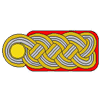AFV Painting & Weathering
Answers to questions about the right paint scheme or tips for the right effect.
Answers to questions about the right paint scheme or tips for the right effect.
Hosted by Darren Baker, Matthew Toms
Finishing and Weathering Sequence

varanusk


Joined: July 04, 2013
KitMaker: 1,288 posts
Armorama: 942 posts

Posted: Wednesday, July 15, 2020 - 12:23 AM UTC
Usual procedure is gloss varnish-decal-gloss varnish. Then you can continue with the rest of steps for weathering. Decal Setter helps also, specially on irregular surfaces.

UpperCanadian

Joined: June 28, 2020
KitMaker: 152 posts
Armorama: 133 posts

Posted: Wednesday, July 15, 2020 - 04:15 AM UTC
Quoted Text
Depending on how thick the decals are they will show a bit before putting a clear coat over them. What you are after is a smooth paint surface with a nicely conformed decal over top with a clear coat to help hide the edges of the decal.
Cheers Rob.
Cheers, thanks. Are you in Vancouver by chance?

UpperCanadian

Joined: June 28, 2020
KitMaker: 152 posts
Armorama: 133 posts

Posted: Wednesday, July 15, 2020 - 04:17 AM UTC
Quoted Text
Usual procedure is gloss varnish-decal-gloss varnish. Then you can continue with the rest of steps for weathering. Decal Setter helps also, specially on irregular surfaces.
Thanks. I read that decal setter is different from decal solvent. Is the latter something I should have? I only have the setter.
Posted: Wednesday, July 15, 2020 - 05:59 AM UTC
The decal set is used first so the decal can be moved around and also helps with adhesion.
The decal softer or solvent is used to soften the decal so to allow it conform to
irregular surfaces such as zimmerit, rivets etc.
Good idea to have both as you never know when you will be in need.
Decal thickness is not consistent with different manufacturers.
Cheers,
The decal softer or solvent is used to soften the decal so to allow it conform to
irregular surfaces such as zimmerit, rivets etc.
Good idea to have both as you never know when you will be in need.
Decal thickness is not consistent with different manufacturers.
Cheers,

UpperCanadian

Joined: June 28, 2020
KitMaker: 152 posts
Armorama: 133 posts

Posted: Wednesday, July 15, 2020 - 06:35 AM UTC
Quoted Text
The decal set is used first so the decal can be moved around and also helps with adhesion.
The decal softer or solvent is used to soften the decal so to allow it conform to
irregular surfaces such as zimmerit, rivets etc.
Good idea to have both as you never know when you will be in need.
Decal thickness is not consistent with different manufacturers.
Cheers,
Thanks Joe.
So I guess I can forgo decal solvent for a flat surface?
I just put gloss on my Pz. III. I want to put decals down, but not sure how to blend them with surface. Is it mostly a matter of getting the decal as smooth to the surface as possible, and then blending with matte clear?
Thanks.
Posted: Wednesday, July 15, 2020 - 08:47 AM UTC
After all my painting and weathering is done, I do prefer to put down a gloss coat this
prevents silvering as the decals will stick better and any air bubbles are easier to
move out.
When all is dry, I spray or brush on up to 3 coats of gloss varnish so that the edges
disappear...some decals are very thick...I have even had to wet sand some old decals,
they were so thick.
Next I weather the new decals slightly to match the paint job.
And finally a flat coat or 2 via airbrush and I am done.
I always use decal set and decal solvent even when working on a flat surface.
This is what works for me...others may suggest differently.
Cheers.
prevents silvering as the decals will stick better and any air bubbles are easier to
move out.
When all is dry, I spray or brush on up to 3 coats of gloss varnish so that the edges
disappear...some decals are very thick...I have even had to wet sand some old decals,
they were so thick.
Next I weather the new decals slightly to match the paint job.
And finally a flat coat or 2 via airbrush and I am done.
I always use decal set and decal solvent even when working on a flat surface.
This is what works for me...others may suggest differently.
Cheers.

UpperCanadian

Joined: June 28, 2020
KitMaker: 152 posts
Armorama: 133 posts

Posted: Wednesday, July 15, 2020 - 08:53 AM UTC
Quoted Text
After all my painting and weathering is done, I do prefer to put down a gloss coat this
prevents silvering as the decals will stick better and any air bubbles are easier to
move out.
When all is dry, I spray or brush on up to 3 coats of gloss varnish so that the edges
disappear...some decals are very thick...I have even had to wet sand some old decals,
they were so thick.
And finally a flat coat or 2 via airbrush and I am done.
I always use decal set and decal solvent even when working on a flat surface.
This is what works for me...others may suggest differently.
Cheers.
Cheers, thanks a lot.


UpperCanadian

Joined: June 28, 2020
KitMaker: 152 posts
Armorama: 133 posts

Posted: Sunday, July 19, 2020 - 05:42 PM UTC
What's the difference between an overall oil wash and a filter?
Is a filter just to highlight certain points on the vehicle?
What is the role of the overall oil wash?
I just put the decals on my Pz. III and am ready to weather. So trying to get the sequence down.
Is a filter just to highlight certain points on the vehicle?
What is the role of the overall oil wash?
I just put the decals on my Pz. III and am ready to weather. So trying to get the sequence down.
Posted: Sunday, July 19, 2020 - 06:18 PM UTC
Hi Dan.
It's well worth going right back to page 1 of this thread and having a good read through the first few pages. I constantly refer back to this thread during my builds,
Hope this helps.
Cheers, D
It's well worth going right back to page 1 of this thread and having a good read through the first few pages. I constantly refer back to this thread during my builds,
Quoted Text
Washes are stronger, like 80% thinner, and I want them to flow into all the corners and panel lines. So they flow better over a smooth, slippery gloss finish. Filters are weak, like 95% thinner, and I want them to stay where I put them on a flat panel, and they stay put best on a rough flat finish. Also a wash, being stronger, would overpower the filter effect.
Hope this helps.
Cheers, D

UpperCanadian

Joined: June 28, 2020
KitMaker: 152 posts
Armorama: 133 posts

Posted: Sunday, July 19, 2020 - 06:27 PM UTC
Quoted Text
Hi Dan.
It's well worth going right back to page 1 of this thread and having a good read through the first few pages. I constantly refer back to this thread during my builds,Quoted TextWashes are stronger, like 80% thinner, and I want them to flow into all the corners and panel lines. So they flow better over a smooth, slippery gloss finish. Filters are weak, like 95% thinner, and I want them to stay where I put them on a flat panel, and they stay put best on a rough flat finish. Also a wash, being stronger, would overpower the filter effect.
Hope this helps.
Cheers, D
Thanks.
I know the colour of a filter varies. Is an overall wash generally dark to accent shadows? What's the difference here to a pin wash?
Posted: Sunday, July 19, 2020 - 06:37 PM UTC
Quoted Text
Thanks.
I know the colour of a filter varies. Is an overall wash generally dark to accent shadows? What's the difference here to a pin wash?
Yes, that's how I read it. Dark brown/grey to highlight surface details and shadows. The pin wash would be applied later and be more relevant to the colour of the mud/dirt/sand accumulating.
Cheers, D
 |












